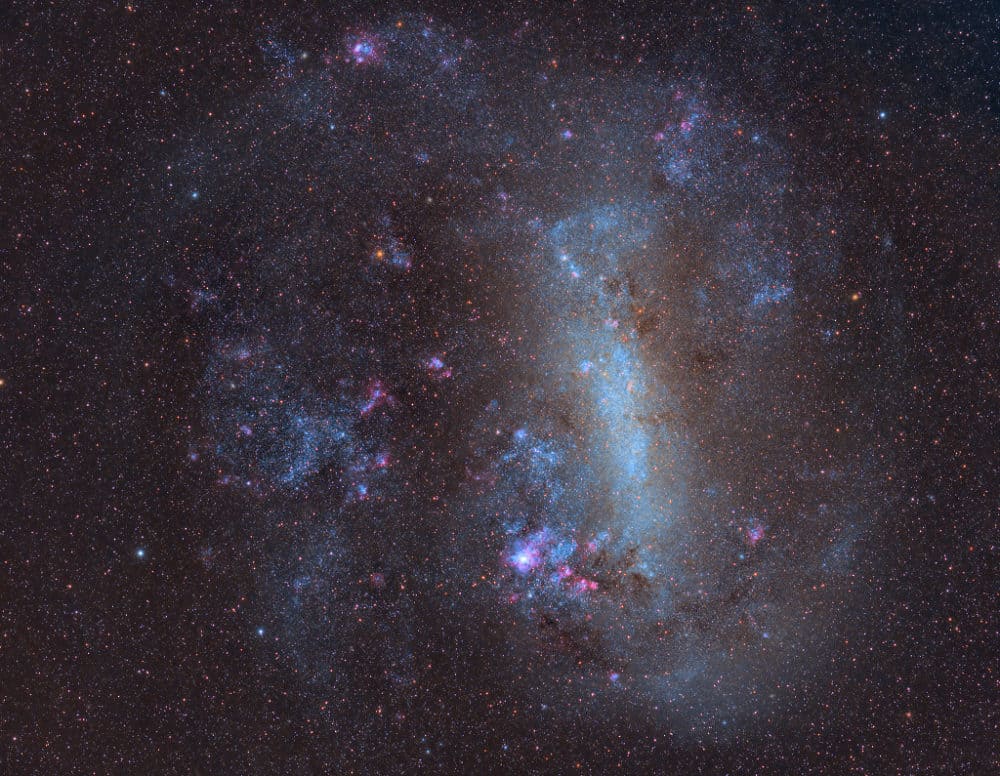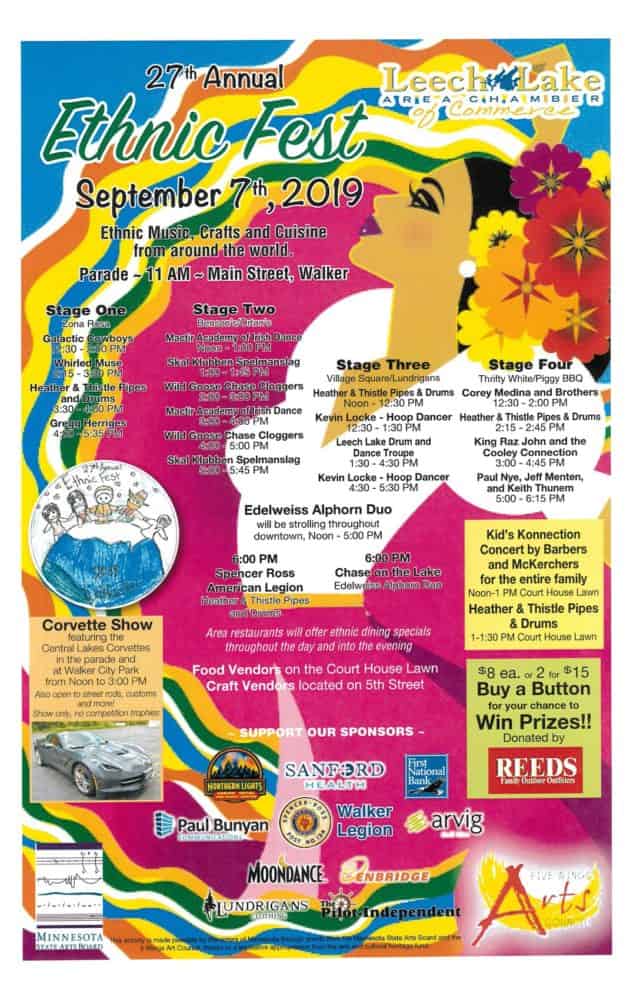Blog
Flamenco Fridays featuring Granaina.
Granaína (Spanish pronunciation: [ɡɾanaˈina]) is a flamenco style of singing and guitar playing from Granada. It is a variant of the Granada fandangos. It was originally danceable, but now has lost its rhythm, is much slower, and is usually only sung or played as a guitar solo, reflecting its Arab-Moorish heritage more strongly than other fandangos.
The famous singer Don Antonio Chacón (1869–1929) is attributed with freeing the granaína from its rhythmic ties and making it popular. Singers usually finish their rendering of the granaína with a media granaína, a similar tune but rising to a higher pitch. Manuel Vallejo (1891–1960) was a famous exponent of this latter cante.
more...The 16th century Portuguese navigator Ferdinand Magellan and his crew had plenty of time to study the southern sky during the first circumnavigation of planet Earth. As a result, two fuzzy cloud-like objects easily visible to southern hemisphere skygazers are known as the Clouds of Magellan, now understood to be satellite galaxies of our much larger, spiral Milky Way galaxy. About 160,000 light-years distant in the constellation Dorado, the Large Magellanic Cloud (LMC) is seen here in a remarkably deep, colorful, image. Spanning about 15,000 light-years or so, it is the most massive of the Milky Way’s satellite galaxies and is the home of the closest supernova in modern times, SN 1987A. The prominent patch below center is 30 Doradus, also known as the magnificent Tarantula Nebula, a giant star-forming region about 1,000 light-years across.
more...Dweezil Zappa (born Ian Donald Calvin Euclid Zappa; September 5, 1969) is an American rock guitarist and occasional actor. He is the son of musical composer and performer Frank Zappa. Exposed to the music industry from an early age, Dweezil developed a strong affinity for playing the guitar and producing music. Able to learn directly from guitarists such as Steve Vai and Eddie Van Halen, Dweezil released his first single (produced by Eddie Van Halen) at the age of 12.
In addition to writing and recording his own music, Dweezil has carried on the legacy of his father’s music by touring with the group Zappa Plays Zappa. The band features renditions of Zappa’s original material and the lineup has often included Zappa alumni such as Napoleon Murphy Brock, Steve Vai, Terry Bozzio and others.
Dweezil Zappa was born in Los Angeles, California to Frank Zappa and Gail Zappa. He is the second of four siblings: his older sister, Moon, younger sister Diva and younger brother Ahmet, and is the cousin of actress Lala Sloatman. Zappa’s father was of Sicilian, Greek, Arab, and French descent, and his mother was of French, Irish and mostly Danish ancestry.
more...George Allen “Buddy” Miles Jr. (September 5, 1947 – February 26, 2008), was an American rock drummer, vocalist, composer, and producer. He was a founding member of the Electric Flag (1967), a member of Jimi Hendrix‘s Band of Gypsys (1969–1970), founder and leader of the Buddy Miles Express and later, the Buddy Miles Band. Miles also played and recorded with Carlos Santana and others. Additionally, he sang lead vocals on the critically and commercially acclaimed “California Raisins” claymation TV commercials and recorded two California Raisins R&B albums. Miles was born in Omaha, Nebraska on September 5, 1947. Buddy’s father played upright bass for the likes of Duke Ellington, Count Basie, Charlie Parker, and Dexter Gordon. By age twelve, Miles had begun touring with his father’s band, the Bebops. Given the nickname “Buddy” by his aunt after the drummer Buddy Rich, he was often seen as a teenager hanging out and recording at Universal Promotions Corporation recording studios, which later became Rainbow Recording Studios. Miles played with a variety of rhythm and blues and soul acts as a teenager, including Ruby & the Romantics, the Delfonics, and Wilson Pickett. In 1964, at the age of 16, Miles met Jimi Hendrix at a show in Montreal, where both were performing as sidemen for other artists. In 1967, Miles joined Hendrix in a jam session at the Malibu home of Stephen Stills. They also went on to play together again in 1968 in both Los Angeles and New York. In the same year, Miles moved to Chicago where he teamed with guitarist Mike Bloomfield and vocalist Nick Gravenites to form The Electric Flag, a blues/soul/rock band. In addition to playing drums, Miles sometimes sang lead vocals for the band, which made its live debut at the Monterey Pop Festival in mid-1967.
John Milton Cage Jr. (September 5, 1912 – August 12, 1992 LA,CA) was an American composer, music theorist, artist, and philosopher. A pioneer of indeterminacy in music, electroacoustic music, and non-standard use of musical instruments, Cage was one of the leading figures of the post-war avant-garde. Critics have lauded him as one of the most influential composers of the 20th century. He was also instrumental in the development of modern dance, mostly through his association with choreographer Merce Cunningham, who was also Cage’s romantic partner for most of their lives.
Cage is perhaps best known for his 1952 composition 4′33″, which is performed in the absence of deliberate sound; musicians who present the work do nothing aside from being present for the duration specified by the title. The content of the composition is not “four minutes and 33 seconds of silence,” as is often assumed, but rather the sounds of the environment heard by the audience during performance. The work’s challenge to assumed definitions about musicianship and musical experience made it a popular and controversial topic both in musicology and the broader aesthetics of art and performance. Cage was also a pioneer of the prepared piano (a piano with its sound altered by objects placed between or on its strings or hammers), for which he wrote numerous dance-related works and a few concert pieces. The best known of these is Sonatas and Interludes(1946–48).
His teachers included Henry Cowell (1933) and Arnold Schoenberg (1933–35), both known for their radical innovations in music, but Cage’s major influences lay in various East and South Asian cultures. Through his studies of Indian philosophy and Zen Buddhism in the late 1940s, Cage came to the idea of aleatoric or chance-controlled music, which he started composing in 1951.[10] The I Ching, an ancient Chinese classic text decision-making tool, which uses chance operations to suggest answers to questions one may pose, became Cage’s standard composition tool for the rest of his life. In a 1957 lecture, Experimental Music, he described music as “a purposeless play” which is “an affirmation of life – not an attempt to bring order out of chaos nor to suggest improvements in creation, but simply a way of waking up to the very life we’re living”.
more...Albert Luandrew (September 5, 1906 – March 17, 1995), known as Sunnyland Slim, was an American blues pianist who was born in the Mississippi Delta and moved to Chicago, helping to make that city a center of postwar blues. The Chicago broadcaster and writer Studs Terkel said Sunnyland Slim was “a living piece of our folk history, gallantly and eloquently carrying on in the old tradition.” Sunnyland Slim was born on a farm in Quitman County, near Vance, Mississippi. He moved to Memphis, Tennessee, in 1925, where he performed with many of the popular blues musicians of the day. His stage name came from the song “Sunnyland Train”, about a railroad line between Memphis and St. Louis, Missouri. In 1942 he moved to Chicago, in the great migration of southern workers to the industrial north.
At that time the electric blues was taking shape in Chicago, and through the years Sunnyland Slim played with such musicians as Muddy Waters, Howlin’ Wolf, Robert Lockwood, Jr., and Little Walter. His piano style is characterised by heavy basses or vamping chords with the left hand and tremolos with the right. His voice was loud, and he sang in a declamatory style.
Sunnyland Slim’s first recording was as a singer with Jump Jackson’s band for Specialty Records in September 1946. His first recordings as a leader were for Hy-Tone Records and Aristocrat Records in late 1947. He continued performing until his death, in 1995.
https://www.youtube.com/watch?v=QeP8qBCOc20
more...Scandinavia
more...Performing with King Ras John at Ethnic Fest 2019 in Walker MN Saturday September 7th 3-445pm
more...Illuminated by ultraviolet radiation from young, massive stars on the right side of this photograph, M17, also known as the Omega Nebula or Swan Nebula, is one of the largest star-forming regions in the Milky Way galaxy. Hubble’s stunning image of a central portion of the nebula has been colorized to highlight certain wavelengths of light. Green represents oxygen while red reveals hydrogen and infrared light. The Omega Nebula was discovered in 1745 by the Swiss astronomer Jean-Philippe Loys de Chéseaux. It is located 5,500 light-years from Earth in the constellation Sagittarius. The nebula has an apparent magnitude of 6 and can be seen with a pair of binoculars. M17, which appears near M16 and M18 in the sky, is best viewed on clear nights in August.
M17 contains one of our galaxy’s youngest star clusters, at only 1 million years old. However, many of the young stars in this cluster are impossible to see because of the gas and dust that surrounds them. The powerful radiation from the young stars evaporates and erodes the dense clouds of cold gas in which new stars form. One such pocket of gas is seen at the center of the brightest region of the nebula (near the bottom of this image) and is about 10 times larger than our solar system. Other dense pockets of gas have formed the remarkable dark features jutting inward from the bottom left corner of the image.
more...Biréli Lagrène (born 4 September 1966) is a French Manouche jazz guitar virtuoso who came to prominence in the 1980s for his Django Reinhardt-influenced style. He often performs in swing, jazz fusion and post-bop styles. Lagrène was born on 4 September 1966 in Saverne, Alsace, France, into a Romani family and community. His father and grandfather were guitarists, and he was raised in the gypsy guitar tradition. He started playing at age four or five, and by seven was improvising jazz in a style similar to Django Reinhardt‘s, whom his father admired and wanted his sons to emulate. In 1980, while still in his early teens, he recorded his first album, Routes to Django: Live at the Krokodil (Jazz Point, 1981).
During the next few years, Lagrène toured with Al Di Meola, Paco de Lucía, and John McLaughlin, all of them guitarists, and played with Benny Carter, Benny Goodman, and Stéphane Grappellii. He joined Larry Coryell and Vic Juris in New York City for a tribute to Reinhardt in 1984, and went on tour with Coryell and Philip Catherine. He also performed with Jaco Pastorius, Stanley Clarke, the Gil Evans Orchestra, Christian Escoudé, and Charlie Haden. In 1989 he performed in a duo with Stanley Jordan.
more...Gerald Stanley Wilson (September 4, 1918 – September 8, 2014) was an American jazz trumpeter, big band bandleader, composer/arranger, and educator. Born in Mississippi, he was based in Los Angeles from the early 1940s. In addition to being a band leader, Wilson wrote arrangements for Duke Ellington, Sarah Vaughan, Ray Charles, Julie London, Dizzy Gillespie, Ella Fitzgerald, Benny Carter, Lionel Hampton, Billie Holiday, Dinah Washington, and Nancy Wilson. Wilson was born in Shelby, Mississippi, and at the age of 16 moved to Detroit, where he graduated from Cass Technical High School (one of his classmates was saxophonist Wardell Gray). He joined the Jimmie Lunceford orchestra in 1939, replacing its trumpeter and arranger, Sy Oliver. While with Lunceford, Wilson contributed numbers to the band’s book, including “Hi Spook” and “Yard-dog Mazurka”, the first influenced by Ellington’srecording of “Caravan” and the latter an influence on Stan Kenton‘s “Intermission Riff”.
During World War II, Wilson also performed for a brief time with the U.S. Navy, with musicians including Clark Terry, Willie Smith and Jimmy Nottingham, among others. Around 2005, many of the members of the band reunited as “The Great Lakes Experience Big Band,” with Wilson conducting and Ernie Andrews making a guest appearance at the invitation of Clark Terry. Wilson also played and arranged for the bands of Benny Carter, Duke Ellington, Count Basie and Dizzy Gillespie.
more...Anderson Meade Lewis (September 4, 1905 – June 7, 1964), known as Meade Lux Lewis, was an American pianist and composer, noted for his playing in the boogie-woogie style. His best-known work, “Honky Tonk Train Blues”, has been recorded by many artists. Lewis was born in Chicago, though some sources state Louisville, Kentucky, on September 4, 1905 (September 3 and 13 have also been cited as his date of birth in various sources). In his youth he was influenced by the pianist Jimmy Yancey. His father, a guitarist who made two recordings of his own, introduced Meade to music and arranged for him to have violin lessons. He gave up the violin at age 16, shortly after his father’s death, and switched to the piano. The nickname “Lux” was given to him by his boyhood friends. He would imitate a couple of characters from a popular comic strip in Chicago, Alphonse and Gaston, and stroke an imaginary beard as part of the routine. His friends started calling him the Duke of Luxembourgbecause of this, and the name stuck for the rest of his life. He became friends with Albert Ammons during childhood, a friendship that would last throughout their lives. They went to the same school together briefly, and they practiced and learned the piano together on the Ammons family piano.
PSR B1509−58 is a pulsar approximately 17,000 light-years away in the constellation of Circinus discovered by the Einstein X-Ray Observatory in 1982. It appears approximately 1,700 years old, and it sits in a nebula that spans about 150 light years. NASA described the star as “a rapidly spinning neutron star which is spewing energy out into the space around it to create complex and intriguing structures, including one that resembles a large cosmic hand.” Which is also known by name “Hand of God”. The spin rate is “almost 7 times per second”.
more...Dorothy Masuka (3 September 1935, Bulawayo, Southern Rhodesia (now Zimbabwe) – 23 February 2019, Johannesburg, South Africa) was a Zimbabwe-born South African jazz singer. She was born in Bulawayo, the fourth of seven children, and her mother was Zulu while her father was a Zambian hotel chef. Still, she attended a Catholic school deemed good by the standards of education allowed blacks. Her family moved to South Africa when she was 12 due to her health. By the time she was 19 she was touring in South Africa with singers she had admired as a girl. Masuka’s music was popular in South Africa throughout the 1950s, but when her songs became more serious, the government began questioning her. Her song “Dr. Malan,” mentioning difficult laws, was banned and in 1961 she sang a song for Patrice Lumumba, which led to her exile. This exile lasted 31 years in total during which she lived in Zambia and worked as a flight attendant. She returned to Zimbabwe in 1980 after independence. Many of her songs are in the Ndebele language or Sindebele languages.
https://www.youtube.com/watch?v=TV3n4rt26LA
Freddie King (September 3, 1934 – December 28, 1976) was an American blues guitarist and singer. He recorded several hits for Federal Records in the early 1960s. His soulful and powerful voice and distinctive guitar style inspired many musicians, particularly guitarists. He was inducted into the Rock and Roll Hall of Fame in 2012.
King based his guitar style on Texas blues and Chicago blues influences. His best-known recordings include the early instrumentals “Hide Away” (1961), “San-Ho-Zay,” (1961) and “The Stumble” (1962). The album Freddy King Sings showcased his singing talents and included the record chart hits “You’ve Got to Love Her with a Feeling” and “I’m Tore Down”. He later became involved with more rhythm and blues– and rock-oriented producers and was one of the first bluesmen to have a multiracial backing band at live performances. According to his birth certificate he was named Fred King, and his parents were Ella Mae King and J. T. Christian. When Freddie was six years old, his mother and his uncle began teaching him to play the guitar. In autumn 1949, he and his family moved from Dallas to the South Side of Chicago.
Shoista Mullojonova (Tajik: Шоиста Муллоҷонова, Persian: شایسته ملاجانآوا, Russian: Шоиста Рубиновна Муллоджанова; September 3, 1925 – June 26, 2010), born Shushana Rubinovna Mullodzhanova, was a renowned Tajik-born Bukharian Jewish Shashmakom singer. She was born in Dushanbe, Tajik ASSR to a religious Bukharian Jewish family. Her mother, Sivyo Davydova, was from Samarkand and her father, Rubin Mullodzhanov, originally came from Bukhara. Her family traces its ancestry to an artistocratic Levite tribe that has been into performing and entertaining since the time of the First and Second Temple in Jerusalem. At some point as an adult, she changed her surname from Mullodzhanova to Mullojonova in Soviet Tajikistan.
More Posts
- Daily Roots with Lee Scratch Perry
- Cosmos NGC 253
- Ray Manzarek
- Omar Hakim
- Bill Laswell
- World Music with Les Ambassadeurs Internationaux
- Daily Roots with U Brown
- Happy Birthday Sadie 2022
- Cosmos IC 342
- Didier Lockwood
- Little Johnny Taylor
- Otis Clay
- Sérgio Mendes
- Flamenco Fridays with Maria del Mar Moreno
- Daily Roots with Lone Ranger
- Cosmos NGC 1555
- Rufus Reid
- Manu Dibango
- Roland Hanna
- Chick Webb



